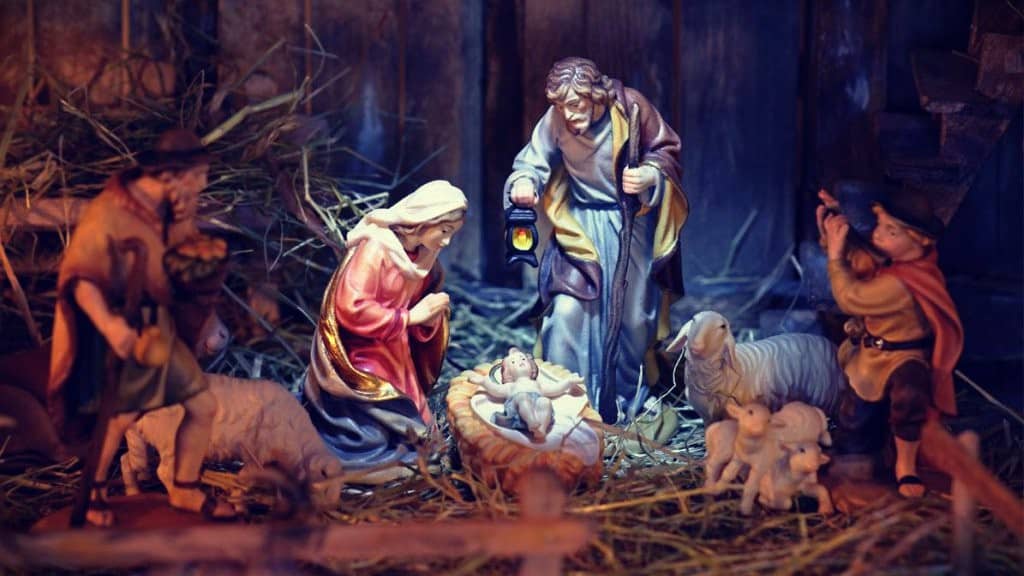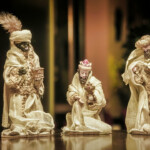During the Iberian colonization and evangelization of the 15th and 16th centuries, the friars -mainly Franciscans- brought the nativity scene to the New World.
Origin and history of the Christmas crib or nativity scene
The practice of representing the birth of Jesus in images has its roots in the 13th century and was initiated by St. Francis of Assisi.
According to the story, the preacher, poor and dressed in rags, was surprised by the harsh winter while preaching in the Italian countryside near Rieti. He sought refuge in the hermitage of Greccio. Christmas 1223 was approaching.
He was drawn to recreate the mystery of the birth of Jesus in Bethlehem as he contemplated the reading of St. Luke the Evangelist and prayed in the peace of the forest.
Mounting a small straw structure as a portal, he filled it with a manger, borrowed an ox and a donkey from the peasants of the neighborhood and invited some of them to represent the scene of the adoration of the shepherds.
St. Luke, chapter 2, verses 2 to 14
The beautiful notion quickly spread throughout Catholic Europe, first to Spain and then to the rest of Europe. The protagonists of the significant event described in chapter 2, verses 2 to 14, of Luke’s Gospel, were recreated in clay figures in Naples at the end of the 15th century. The fragment reads:
At that time, the emperor issued a law ordering a census to be taken throughout the empire. When Quirinus was governor of Syria, the first census was taken. Everyone traveled to their respective cities to register.
Being a descendant of David, Joseph also left Nazareth in Galilee and traveled to Bethlehem in Judea to register with Mary, his wife, who was expecting a son.
The time of the birth came when they were in Bethlehem. As there was no room for them in the common room, she gave birth to her firstborn, wrapped him and placed him in a manger.
In the area, shepherds took turns living in the fields during the day and tending their flocks at night. They were startled by the appearance of the angel of the Lord and the glory of the Lord surrounding them.
However, the angel said to them
Do not be afraid, for I have come to bring you good news that will make everyone very happy. Christ the Lord, our Savior, has been born for you today in the city of David.
You will see a newborn baby lying in a manger, wrapped in swaddling clothes, so you will be able to identify him. Glory to God in the highest and on earth, grace and peace to men,” sang a great number of heavenly beings who suddenly appeared around the angel.
Allegorical interpretations of the Nativity Scene
The friars recreated allegorical representations of the nativity scene after they arrived in America in the 15th and 16th centuries.
Depending on the imagination and resources of each Christian community, variations of the nativity scene were included in each Latin American village, as well as in the areas of what is now the United States that were occupied by Spain. These scenes were accompanied by carols allegorical to the nativity scene.
To elevate Christmas devotion, the Catholic Church promoted biblical representations of the Nativity of the Christ Child in churches, homes and public spaces. Lying in a manger, wrapped in swaddling clothes, this is how you can identify him.
Glory to God in the highest and on earth, grace and peace to men,” sang a great number of heavenly beings who suddenly appeared around the angel.





